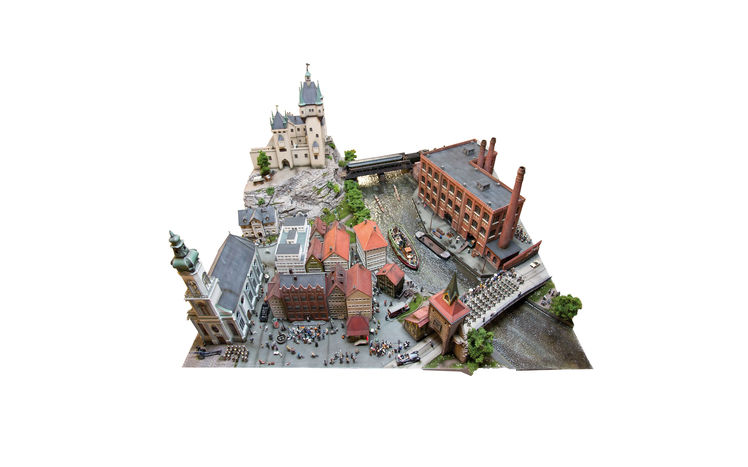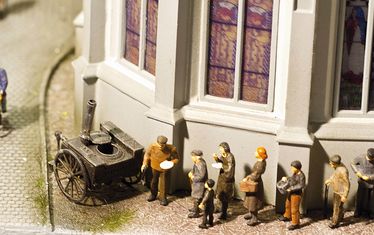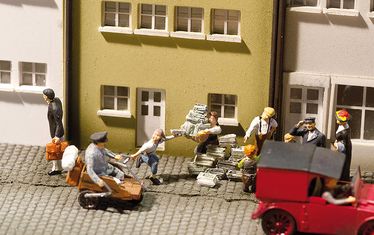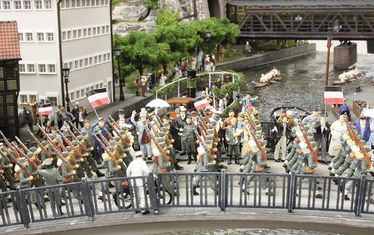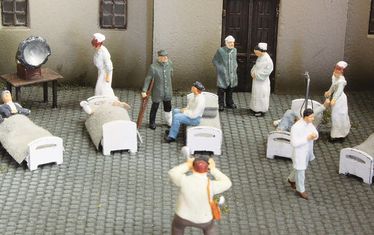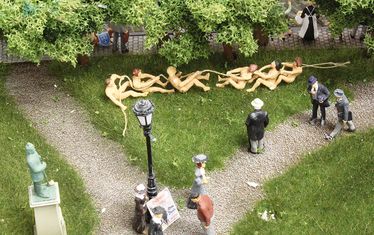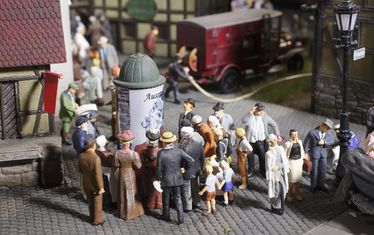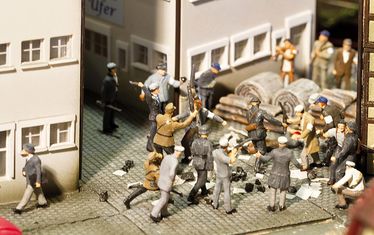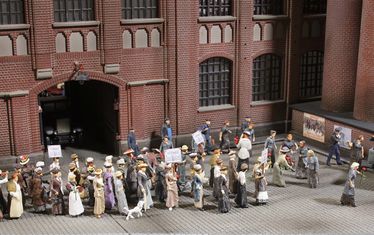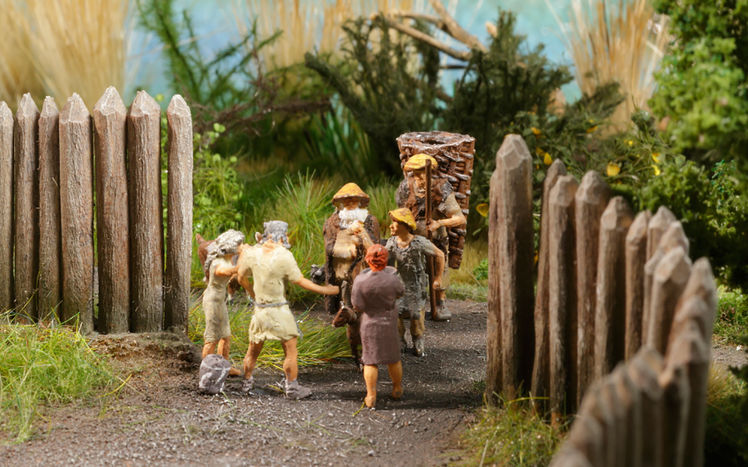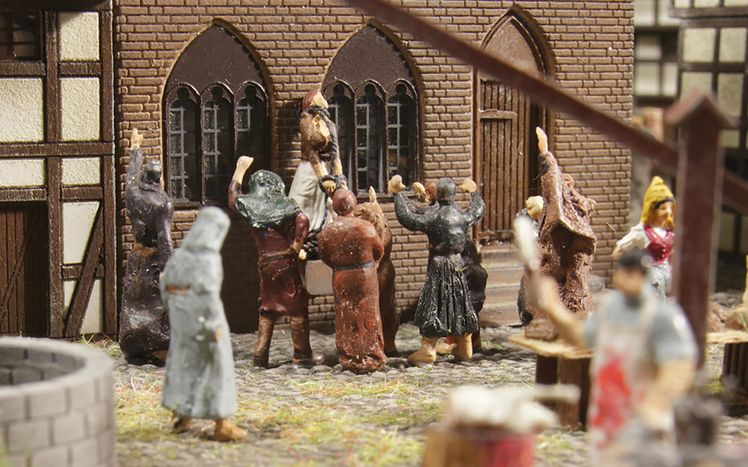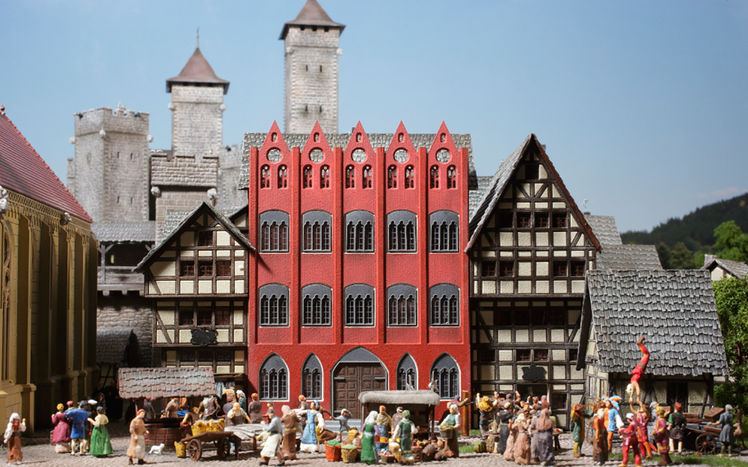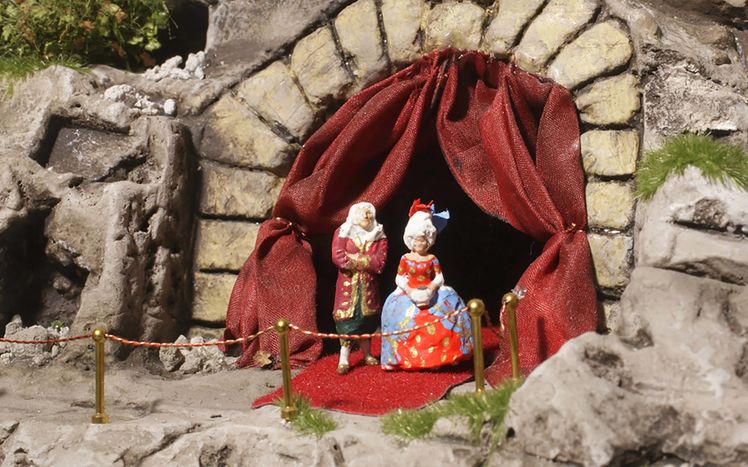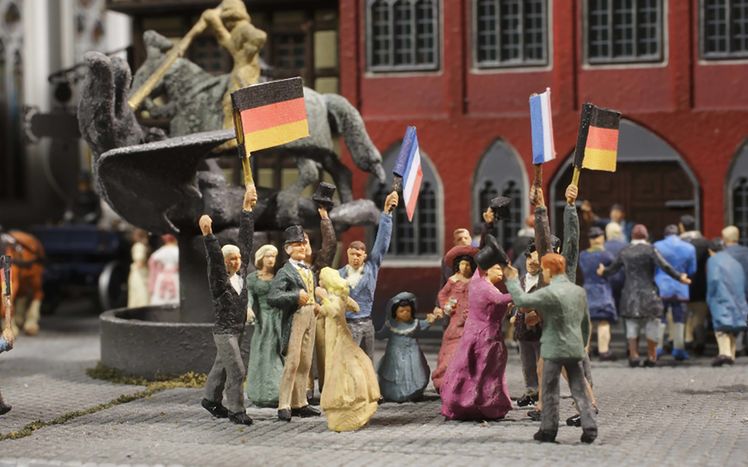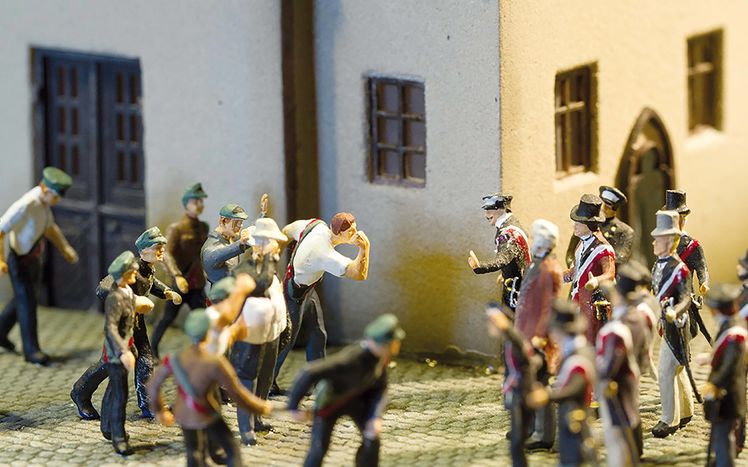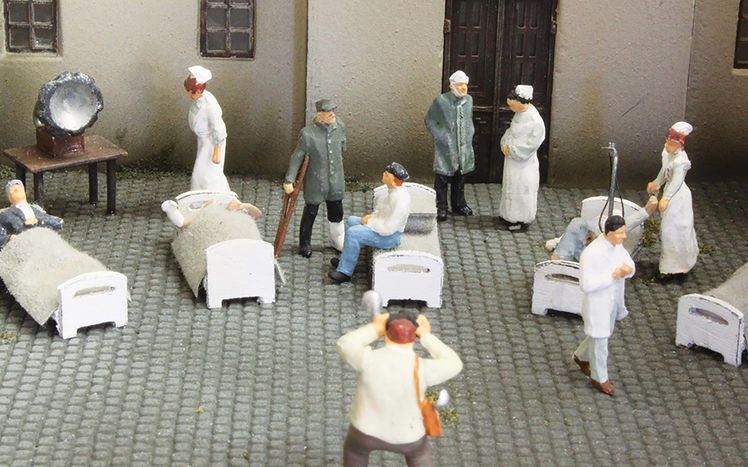1910 - 1933
The country is on straight course into the Great Depression in the end of the 1920s. The people are facing social hardships and unemployment.
Politics
At the same time, people are trying to liberate themselves from social morals and political restraints. This development leads to changes in architecture, the arts, and fashion (secession). Reflecting a liberated mindset, the first rational dresses are worn without corsets. Women are demonstrating in the streets as well. There’s an election in the town hall, but only taxpayers are eligible to vote, women are not, yet.
